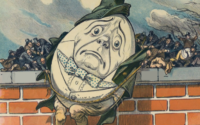Margin Calls From Clearinghouses Seen Stoking Future Crises
(Bloomberg) — Central clearinghouses that hold over $1 trillion in liquid assets may exacerbate periods of financial stress, creating “margin spirals” that can push down asset prices, according to researchers from the Bank for International Settlements.
Most Read from Bloomberg
The researchers focused on the impact when the central counterparty clearinghouses, known as CCPs, increase initial margin requirements for its members during times of stress. This may lead to “fire sales” in cash and derivative markets as investors dump assets to raise the needed funds, increasing volatility further and triggering additional rounds of margin calls, the paper notes.
The researchers also raised concern over clearinghouses’ $600 billion holdings of government bonds. The dual role of such assets — which can act as both the collateral backing a trade and the underlying asset behind a derivatives transaction — creates a “wrong way risk” in a selloff when the diminishing value of collateral encourages further sales.
“CCPs currently manage a large pool of liquid assets, which supports financial stability by safeguarding them from counterparty risk,” said the researchers Iñaki Aldasoro, Fernando Avalos and Wenqian Huang. “At the same time, risk does not disappear but morphs into systemic liquidity risk, especially in a context of margin spirals.”
Total collateral in global CCPs amounted to $1.3 trillion as of mid-June, made up predominately of cash — which includes items such as deposits held at central banks and reverse repurchase agreements – and government bonds, the BIS estimated. That stockpile was equivalent to about 10% of all high-quality liquid assets held by global systemically important banks.
Settling transactions through central clearinghouses was one of the key objectives of market regulations following the global financial crisis that sought to vanquish the risk that the blow up of one firm would cause a systemic shock like the one that followed the Lehman Brothers collapse. Even now, US regulators are pushing for hedge funds to start centrally clearing many of their transactions in Treasuries.
Clearinghouses require that its members place collateral to protect against counterparty risk, but meeting such demands can create liquidity risks as traders rush to high-quality liquid assets in times of market volatility.
The BIS’s paper adds to regulatory scrutiny of clearinghouses’ role in market meltdowns. The Bank of England is asking CCPs for information on the impact of financial volatility, their role in issuing margin calls and how they might reinvest some of the margin received, according to Randall Kroszner, a member of the central bank’s Financial Policy Committee.
The BIS researchers found CCPs are not immune from “flight-to-safety” behavior. US CCPs’ deposits with the Federal Reserve doubled in the first quarter of 2020 amid market panic over the coronavirus, in what the the paper called “both a response and a contributor to the dash for cash.” A more modest spike occurred at the beginning of the war in Ukraine.
Meanwhile, wrong-way risk dynamics appeared to play a role during the 2010–11 Irish sovereign debt crisis, the BIS said. Investors liquidated positions in Irish bonds after a CCP raised the haircuts on such bonds when used as collateral. This led to lower prices of Irish government bonds, triggering further haircuts, further position closures and ultimately a downward price spiral.
“While the size of CCP government bond holdings remains relatively small, the potential for self-reinforcing spirals should not be underestimated,” the BIS said, identifying Brazilian, Chilean and Swedish bonds markets as those with the highest CCP holdings. “Recent stress in the UK gilt market serves as a stark reminder that self-reinforcing spirals originating in a relatively small market segment can potentially threaten the stability of the broader financial system.”
The BIS also warned in a separate paper that liquidity needs may force some life insurers to recognize yet unrecognized losses, in a similar fashion to the US banking turmoil in March.
Most Read from Bloomberg Businessweek
©2023 Bloomberg L.P.
[ad_2]
Source link

